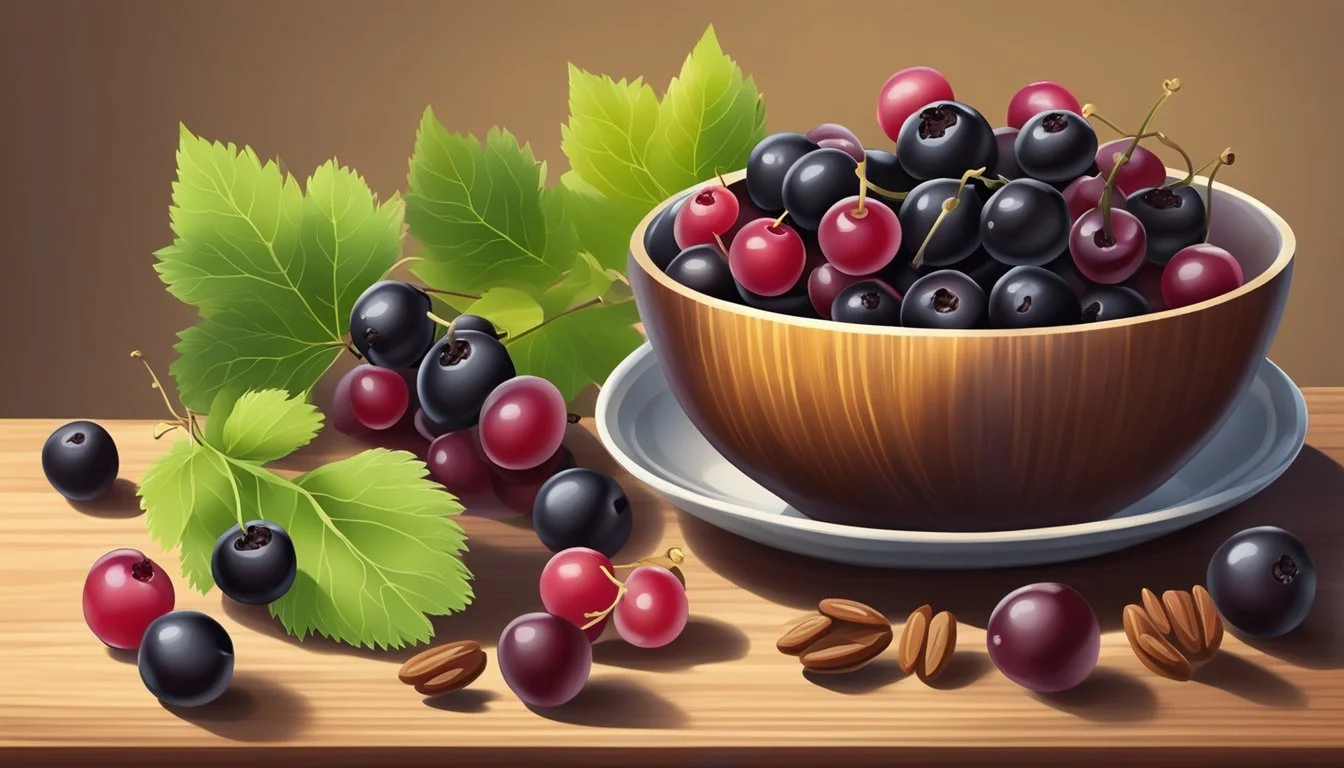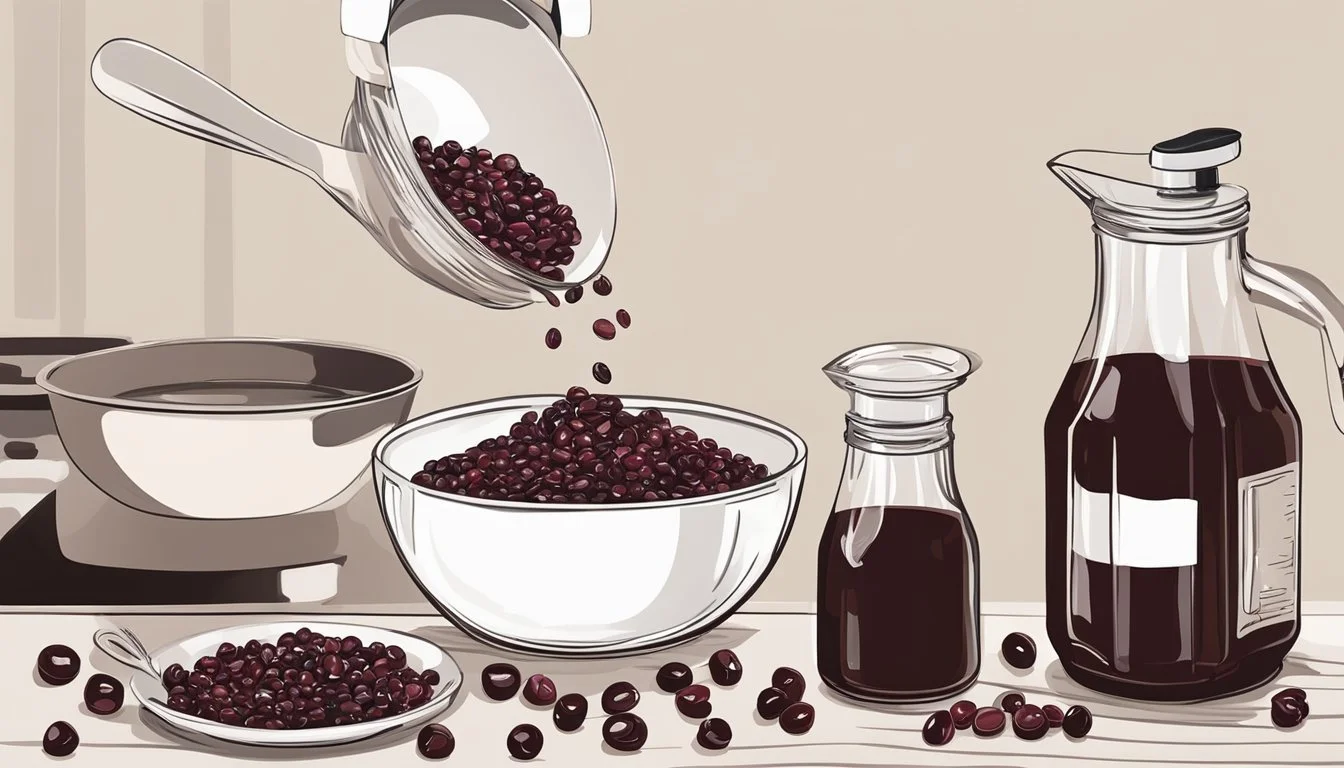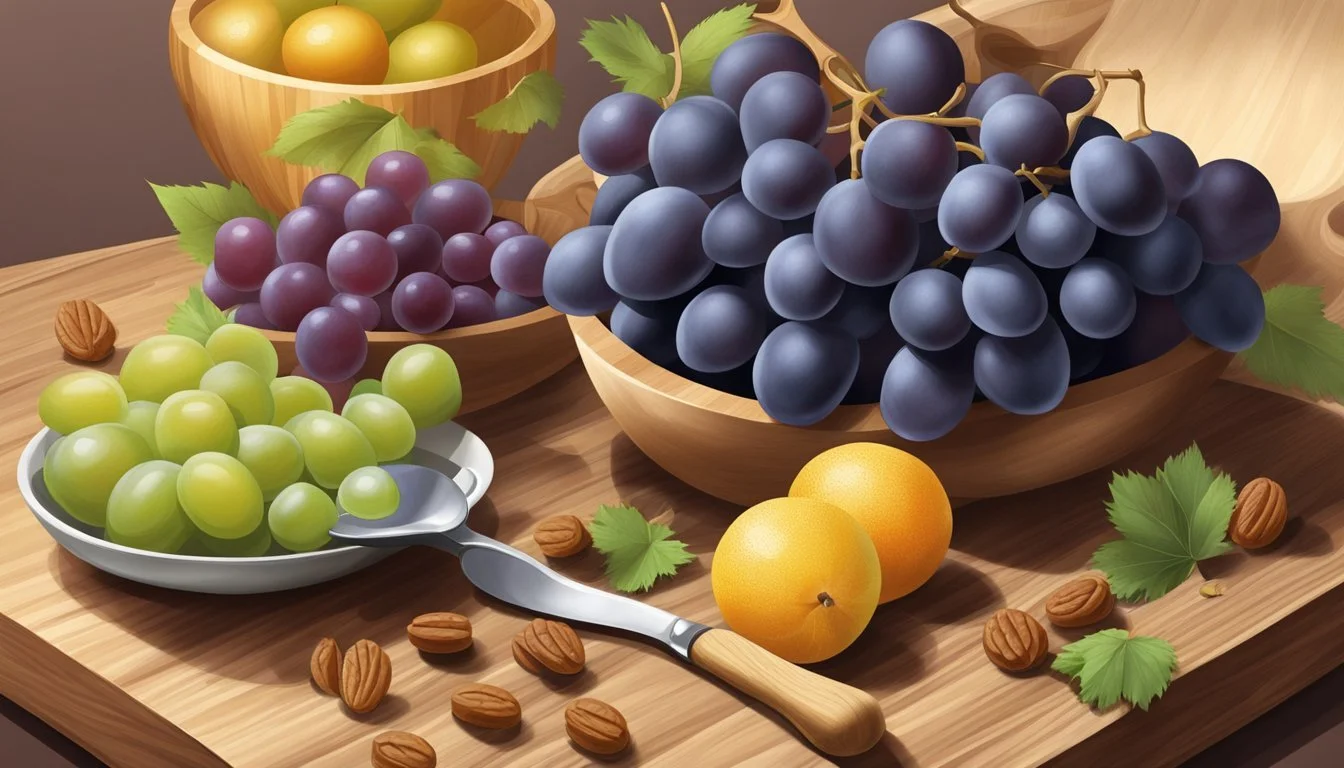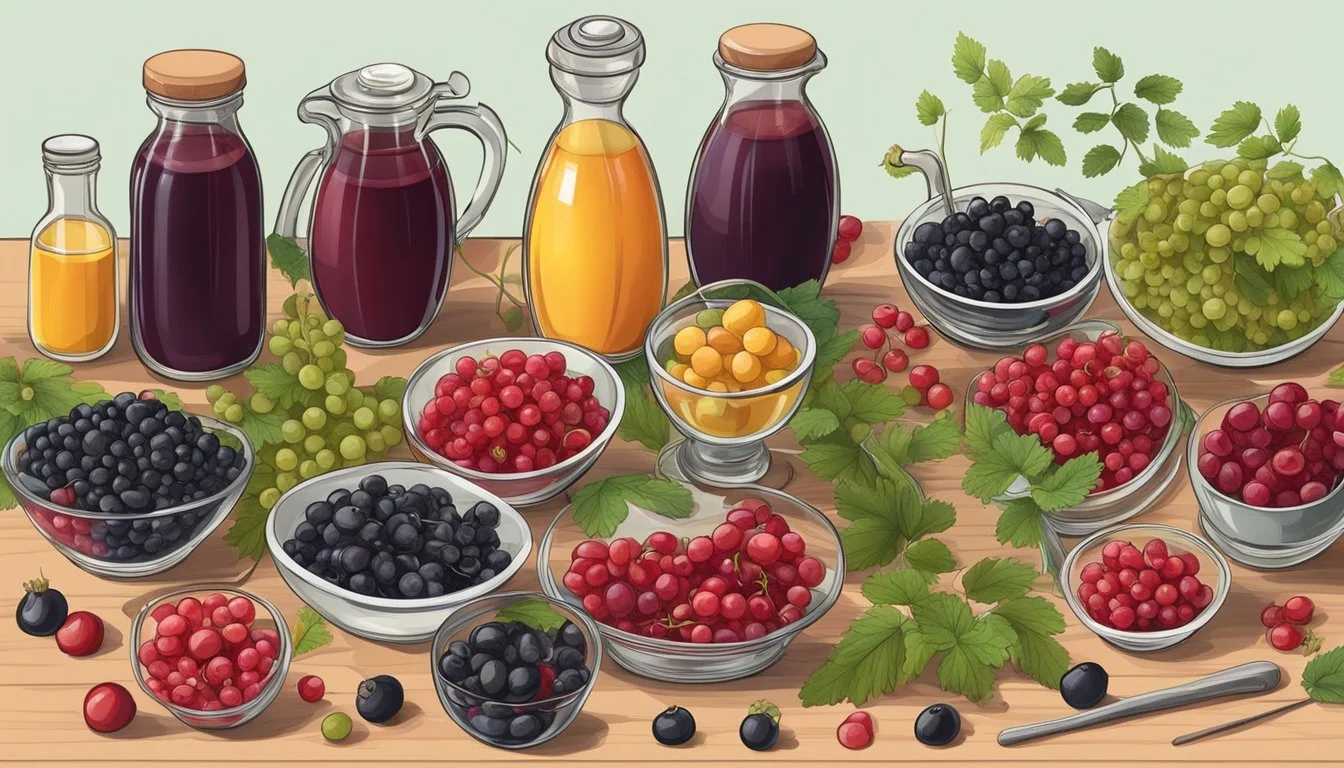Currants Substitutes
Top Alternatives for Your Recipes
Looking to find the best substitutes for currants in your recipes? Whether you're baking, cooking, or preparing a fresh dish, finding a suitable replacement can be pivotal to maintaining flavor and texture. Raisins, dried cranberries, and dried blueberries are among the best alternatives, offering similar sweetness and chewiness to currants.
Prunes, which are dried plums, can also work well in baked goods, providing a sweet and tangy taste. For a fresher option, kumquats offer a unique mix of tanginess and sweetness that can elevate any dish. Each option brings its unique qualities, making it easy to find the perfect substitute for your specific culinary needs.
Exploring these substitutes not only ensures you achieve the desired flavor but also adds a versatile range of ingredients to your pantry. From cranberries packed with antioxidants to the easily grown kumquat, these alternatives provide both health benefits and culinary flexibility.
Understanding Currants
Currants come in several varieties, each offering unique nutritional benefits and culinary uses. They are rich in vitamins and minerals, including vitamin C, fiber, and antioxidants.
Types of Currants
Currants are small berries that grow in clusters and come in three primary types: black, red, and white. Black currants are known for their intense flavor and deep color, which makes them highly sought after for juices and jams. Red currants offer a slightly tart flavor and are often used fresh in salads and desserts. White currants, which are an albino form of red currants, have a sweeter and more delicate flavor, making them ideal for garnishes and fresh consumption.
Nutritional Profile
Currants are celebrated for their nutritional density. They are particularly high in vitamin C, which is essential for immune function and skin health. In addition, currants provide significant amounts of dietary fiber, aiding in digestion and promoting a feeling of fullness. Antioxidants found in currants help combat oxidative stress and reduce inflammation. They also contain potassium, which is crucial for heart health and maintaining proper muscle function. Other vitamins and minerals present in currants contribute to overall well-being.
Culinary Uses of Currants
Currants are extremely versatile in the kitchen. They can be eaten fresh, or their tart and sweet flavors can enhance a variety of dishes. Black currants are typically used in making syrups, jams, and jellies due to their robust flavor. Red currants can be added to salads, used as a topping for desserts, or made into sauces that pair well with meats. White currants work well as fresh garnishes and in light desserts. Currants provide both flavor and nutritional benefits, making them a fantastic addition to many recipes.
Overall, whether used fresh or dried, currants offer a burst of flavor and a wealth of health benefits, making them a valuable ingredient in any pantry.
Popular Currant Substitutes
There are several suitable alternatives to currants that can be used in different recipes. These substitutes include raisins and sultanas, dried cherries and cranberries, and dried apricots and prunes.
Raisins and Sultanas
Raisins and sultanas are popular substitutes for currants due to their similar texture and sweetness. Raisins, derived from dried grapes, come in various sizes and colors. Sultanas, which are often lighter in color, come from seedless green grapes and are known for their juiciness.
Raisins and sultanas can be used in baked goods such as cakes, cookies, and muffins. They also work well in savory dishes like couscous or salads. When using them as currant substitutes, a 1:1 ratio is recommended. For a more balanced sweetness and texture, it may be useful to soak them in warm water before use.
Dried Cherries and Cranberries
Dried cherries and cranberries offer a slightly tart flavor that complements both sweet and savory dishes. Dried cherries are often used in baked goods, cereals, and as a topping for yogurt or oatmeal. Cranberries, on the other hand, are known for their high Vitamin C and antioxidant content.
When substituting these for currants, a 1:1 ratio is typically effective. To balance the tartness of dried cherries, a small amount of vinegar can be added to the recipe. For dried cranberries, adding sugar can help if a sweeter flavor is desired. Both are excellent in holiday dishes and fruit salads.
Dried Apricots and Prunes
Dried apricots and prunes are versatile substitutes for currants offering a unique sweetness and chewy texture. Dried apricots provide a rich source of fiber, vitamins, and minerals while prunes are known for their digestive benefits.
Both can be chopped and used in desserts, trail mixes, and stuffing for meats. When using dried apricots or prunes, a 1:1 ratio is appropriate. Due to their larger size, they may need to be chopped into smaller pieces to better mimic the size and texture of currants. These fruits add a delightful flavor profile to both modern and traditional recipes.
Using Substitutes in Sweet Dishes
Substituting currants in sweet dishes requires some consideration of the texture and sweetness of the alternative ingredients. With the right choices, you can achieve excellent results in baking, jams, and other desserts.
Baking with Currant Substitutes
In baking, currants can be replaced with raisins, dried blueberries, cranberries, and dried cherries. These substitutes work well in cookies, muffins, cakes, and bread.
Raisins, made from dried grapes, offer a similar texture and sweetness. Dried blueberries provide a bit of juiciness and tartness, making them ideal for sweet baked goods needing additional moisture.
Cranberries, whether dried or fresh, add a slight tartness that can balance sweetness. Dried cherries are another option, delivering a richer, more intense flavor that pairs well with warm spices like cinnamon and cloves. Each of these alternatives can be used in the same quantity as currants for easy substitution.
Making Jams and Desserts
For jams and desserts, cranberry jelly, dried dates, dried apricots, and jujube are excellent alternatives. Cranberry jelly is particularly suitable for red currant jelly in pies and jams due to its similar consistency and natural tartness.
Dried dates absorb water, swelling up and providing natural sweetness and a moist texture, making them perfect in dense desserts and spreads. Dried apricots offer a smooth texture and a bright, fruity flavor, enhancing scones and other pastries.
Jujube, though less common, can be an unconventional but effective substitute, providing a unique flavor profile that can elevate your recipes. Using these alternatives effectively maintains the desired consistency and sweetness in jams and desserts.
Using Substitutes in Savory Cooking
When using substitutes for currants in savory cooking, consider how each alternative impacts texture and flavor. Effective choices include dried fruits and berries that blend well into dishes like stews and sauces.
Substitutes in Main Courses
Dried Cranberries offer a slight tartness that complements savory dishes like stews and Mediterranean-inspired main courses. Their lower sugar content makes them suitable for recipes requiring a balance of sweet and salty flavors.
Raisins are easily accessible and inexpensive. They add a mild sweetness, enhancing meat dishes and Mediterranean recipes. Raisins can be particularly effective in lamb stews or tagines.
Dried Cherries can be used to replace currants, providing a deeper sweetness. When using in main courses, it's advisable to add a dash of vinegar to tone down excess sweetness, ensuring the substitute integrates well into savory profiles.
Enhancing Sauces and Stuffing
Dried Blueberries can infuse sauces with a mix of sweetness and tartness. They're excellent for gravies or stuffing that accompany poultry or pork. Their juiciness helps bind ingredients in stuffing, offering a pleasant texture.
Prunes have a naturally sweet flavor and pair well with rich sauces. When added to stuffing, they provide moisture and complement savory herbs like sage and rosemary. This makes them a stellar choice for holiday meals.
Dried Dates can be finely chopped and added to sauces that require a touch of sweetness. When using dates in stuffing, consider adding a tsp of sumac or tamarind to balance the sweetness, ensuring a harmonious blend with other savory components.
Health Considerations and Dietary Benefits
Substituting currants with other fruits can provide excellent health benefits. These alternatives often offer similar nutrients, including fiber and antioxidants, which contribute to various aspects of well-being such as weight management and immune support.
Weight Management and Fiber Content
Many substitutes for currants, like prunes and dried cherries, are packed with dietary fiber. Fiber can aid in digestion by adding bulk to stools, promoting regular bowel movements, and helping to control blood sugar levels.
The fiber content in these substitutes also contributes to weight management. It helps to maintain satiety, reducing overall caloric intake. Prunes, being particularly high in fiber, can be a healthy snack that curbs hunger efficiently.
Dried cherries and raisins also offer fiber, making them suitable additions to cereals, yogurts, and baked goods. This makes them practical choices for a balanced diet, providing both nutritional value and aiding in weight control.
Antioxidant Levels and Immune Support
Currants and their substitutes are rich in antioxidants, essential for protecting the body's cells from damage by free radicals. Antioxidants play a vital role in reducing inflammation and supporting heart health.
Dried cherries and currants contain vitamin C, a crucial antioxidant that helps bolster the immune system. Vitamin C aids in combating infections and promotes faster recovery from illnesses. Substitutes such as prunes and raisins also contain a range of vitamins and minerals like vitamin K, iron, and potassium, enriching their nutritional profile.
These substitutes can easily be integrated into various meals, offering not only health benefits but also serving as natural sweeteners, enhancing the flavor without added sugars.
Additional Tips for Choosing and Using Substitutes
Choosing the right substitute for currants involves understanding the differences in flavor, texture, and how they impact the overall recipe. Considerations like adjusting sugar and moisture content play crucial roles.
Taste and Texture Considerations
When selecting a substitute, consider the flavor profile and texture. Raisins and dried blueberries are excellent substitutes due to their similar sweetness and chewy texture. While raisins are sweeter and slightly less tangy, dried blueberries offer a balance of sweetness and juiciness.
Dried cherries and cranberries provide a tangier flavor, adding a refreshing twist to recipes. These options are particularly good for savory dishes or where a touch of tartness is desired.
When opting for prunes, their sweetness and dense texture work well in baked goods but may necessitate chopping and soaking them in water to soften, ensuring they blend seamlessly into the batter.
Adjusting Sugar and Moisture Content
Substituting currants may require tweaking the recipe to balance sugar and moisture. Raisins and dried dates tend to be sweeter; hence, you might need to reduce the added sugar in your recipe to avoid overpowering sweetness.
Similarly, dried apricots and dried prunes can contribute extra moisture, which is beneficial for cookies and cakes but may need careful monitoring to maintain desired consistency.
Blueberries and kumquats, being juicier, can introduce more liquid into the mix. Adjusting other liquids in the recipe can help mitigate overly moist doughs or batters.
In summary, understanding the specific characteristics of each substitute and how they affect the sugar and moisture levels in your recipe is crucial for achieving the best results.
Creative Variations and Experiments
Exploring creative variations and experimenting with different ingredients can significantly enhance your culinary creations when substituting for currants. There are numerous exotic fruits and common pantry items that can add unique flavors and textures to your dishes.
Incorporating Exotic Fruits
Using exotic fruits like kumquats and jujubes can offer both tangy and sweet dimensions. Kumquats provide a citrusy burst, ideal for recipes needing a mix of tartness and sweetness.
Jujubes, often called Chinese dates, have a chewy texture and can be used in baked goods or salads. Their versatility makes them a good option for both sweet and savory dishes.
Kitchen Pantry Surprises
Common pantry items can also serve as effective currant substitutes. Dried fruits like raisins, dried cherries, and dried apricots are easily accessible and provide a similar chewy texture.
Raisins are particularly versatile and can be used in everything from baked goods to savory dishes.
Dried cherries add a unique, slightly tart sweetness, and dried apricots bring a rich, fruity flavor. These items can be great for those looking to experiment without adding exotic fruits to their grocery list.








